urban75 walk: the Northern Heights Parkland Walk (part two)
A walk along the route of the Finsbury Park to Alexandra Palace railway
Report by urban75 editor, July 2005
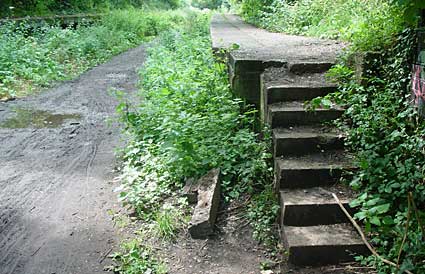
Opened on the 22nd August, 1867, Crouch End station didn't quite make it to its centenary, with closure to passengers taking place on 5th July, 1954.
The station once boasted a single goods siding behind the down platform, a signal box to the north of the station, a booking office on the overbridge and platform level shelters and waiting rooms.
As you can see, the platforms remain but there's not much else to look at after the platform buildings were removed in 1967.
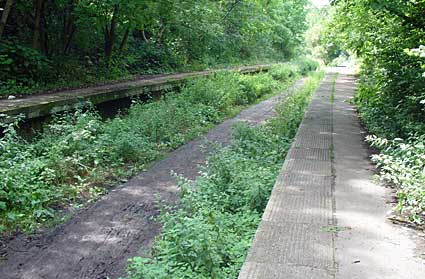
Looking north towards Highgate from the down platform at Crouch End.
In its heyday in the 1870s, the line once saw 60,000 passengers using the Finsbury Park - Alexandra Palace line.
Ironically, when the last train ran in 1954, it had to be lengthened from two to eight carriages to meet public demand.
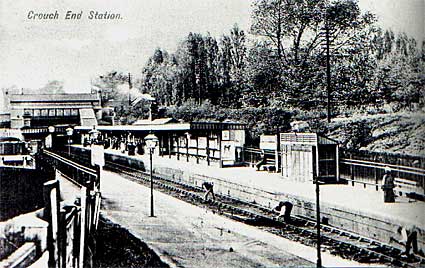
Edwardian view of Crouch End station.

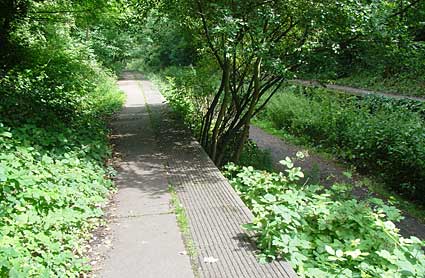
A tree grows by the platform at Crouch End.
In the 1930s, ambitious plans were hatched in the 'New Works programme' to to expand the northernmost extremities of the Northern line, known as the Northern Heights.
It was planned to electrify the existing Finsbury Park via Highgate to Alexandra Palace Great Northern Railway line and thus join it up to the tube network.
The Underground got as far as laying conducting rails and associated track-side fittings between Finsbury Park and Highgate, but all work stopped at the outset of war.
The line continued to be served by steam locomotives after the war, although falling traffic levels resulted in closure on 4th July 1954.
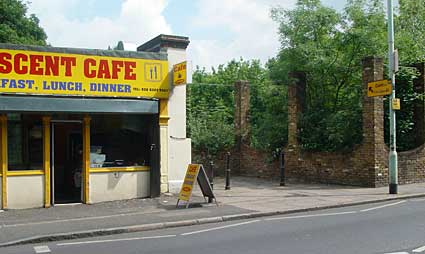
Crescent Cafe and remains of Crouch End station building at road level.
The platform level part of the station was bricked up in the late 1970s with the booking office being reshaped into a curious row of 'U'-shaped inverted arches.
We stopped off in the cafe - a no-nonsense, cheap and cheerful affair - and enjoyed a lovely cheese salad roll (£1) and cup of tea (60p), served by the friendly owner.

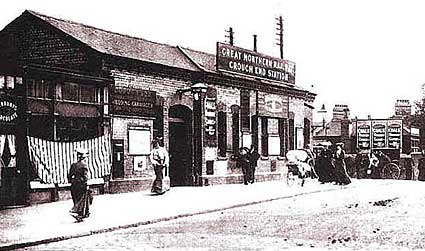
Crouch End station building circa 1910.
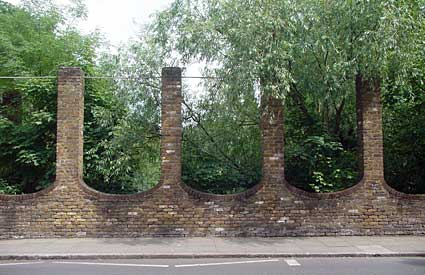
The sad remains of the Crouch End station building, July, 2005.
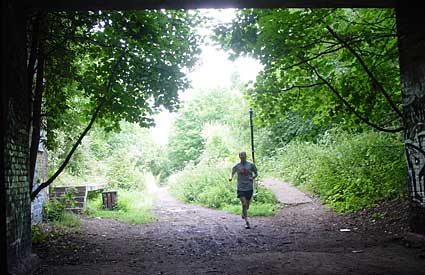
A jogger huffs and puffs his way under the Crouch End Hill road bridge in this view looking towards Finsbury Park.

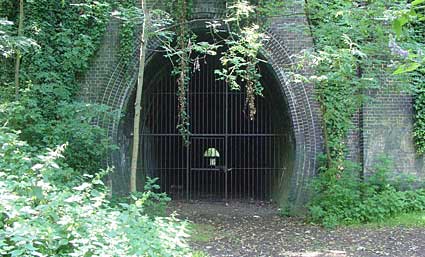
Tunnel mouth, south of Highgate station.
The unusually tall oval shape of the tunnel was designed to accommodate steam trains.
The brickwork on the right tunnel was rebuilt after the tunnel suffered after a direct hit by a bomb during the Blitz in WWII.
» See 360º panorama of disused tunnels
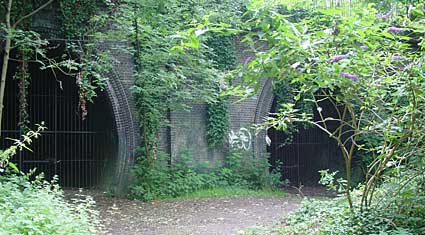
There's two tunnels running parallel with each other, although both were, unfortunately, firmly padlocked shut.
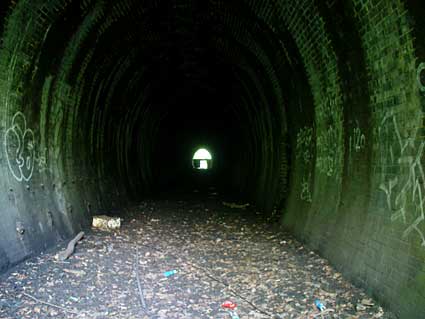
Looking along the tunnel towards Highgate station.

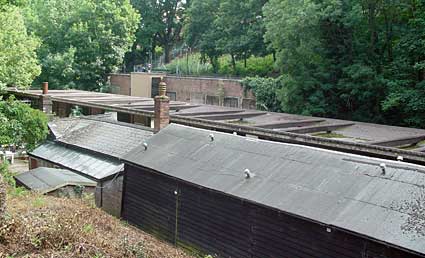
Set in a deep cutting by the side of Archway Road, Highgate station has tunnels at both ends of its platforms.
Although firmly sealed off from the public (and my camera), the station's architecture has barely altered since the station was closed in 1954 - probably because it sits atop the tube station below!
Architect Charles Holden designed the platform structures, and you can see one of the original station buildings (now a private dwelling) to the left in the photograph.
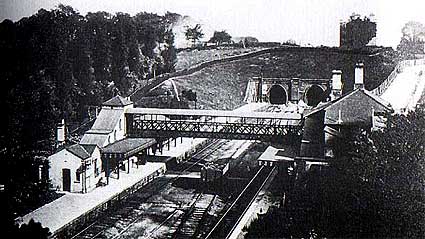
Archive postcard view of Highgate station.
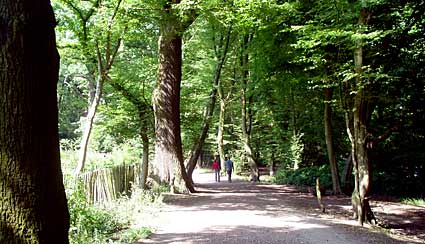
With the Highgate station section being inaccessible, we had to take a pleasant diversion through Highgate Woods before joining the old trackbed.
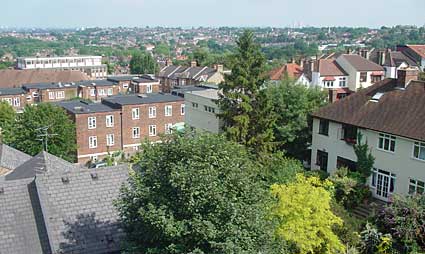
The viaduct between Highgate and Alexandra Palace stations provides spectacular views over London - I could easily make out the dome of St Paul's and Canary Wharf from this surprisingly high vantage point (it must have been a tough climb for a steam train).
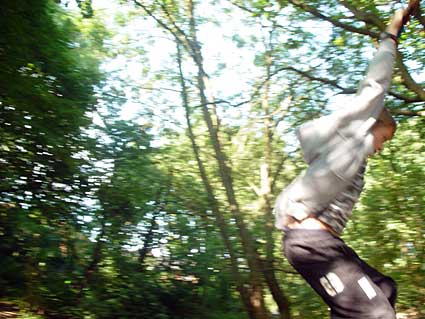
Someone had thoughtfully provided a rope swing by the Parkland Walk!

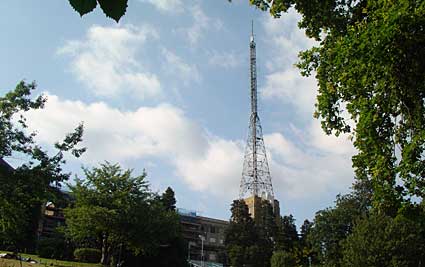
Unveiled as 'The People�s Palace' in 1873, Alexandra Palace attracted 120,000 visitors in less than a fortnight, but the jubilation of the owners was short lived as the building burnt to the ground just 16 days after its opening.
Rebuilt less than two years later on 1st May 1875, the new attraction covered 7 acres and centred around the Great Hall, which housed the colossal Willis Organ, a thunderous beast powered by two steam engines and vast bellows.
Financial difficulties led to the creation of the Alexandra Palace and Park Trust which was charged with ensuring that the Palace and Park be made "available for the free use and recreation of the public forever".
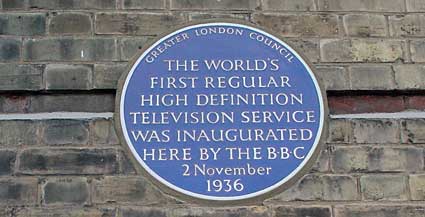
The BBC leased the eastern part of Alexandra Palace in 1935 and broadcast the first public television transmissions from the building a year later.
Alexandra Palace remained the main transmitting centre for the BBC until 1956, after which it was used exclusively for news broadcasts.
On 10th July 1980, disaster struck again and the Great Hall, Banqueting Suite, and former roller rink together with the theatre dressing rooms were completely destroyed by fire (only the Palm Court and the BBC's offices escaped damage.)
Once again, Alexandra Palace rose from the ashes, reopening on 17th March 1988. Fittingly, the pub on the site is known as The Phoenix.
|

